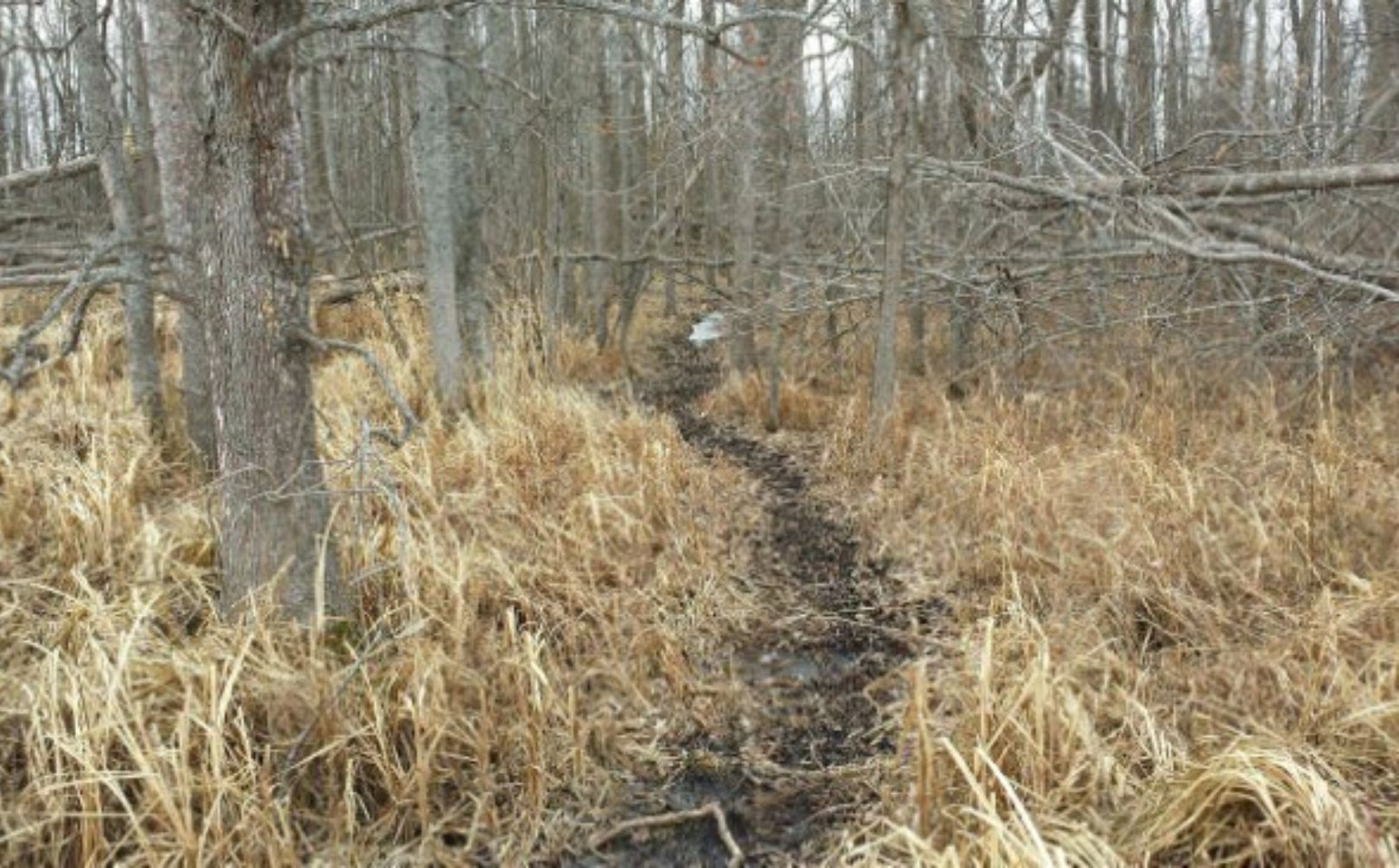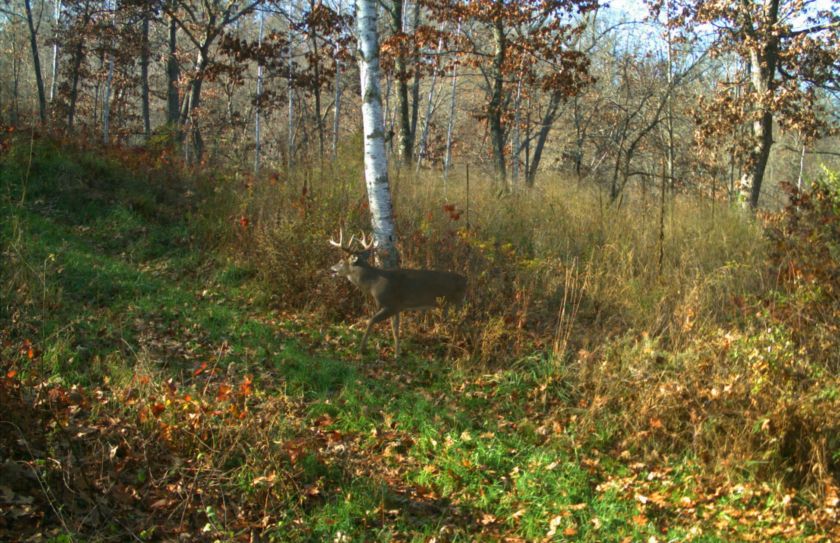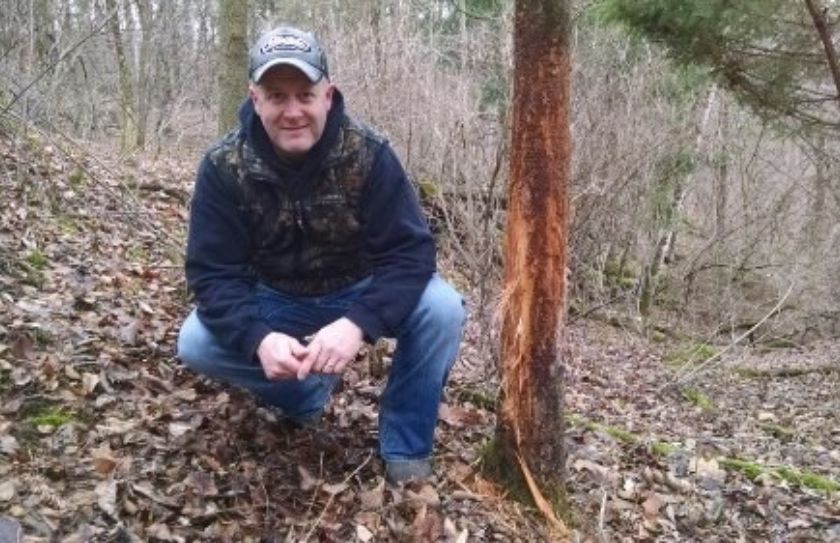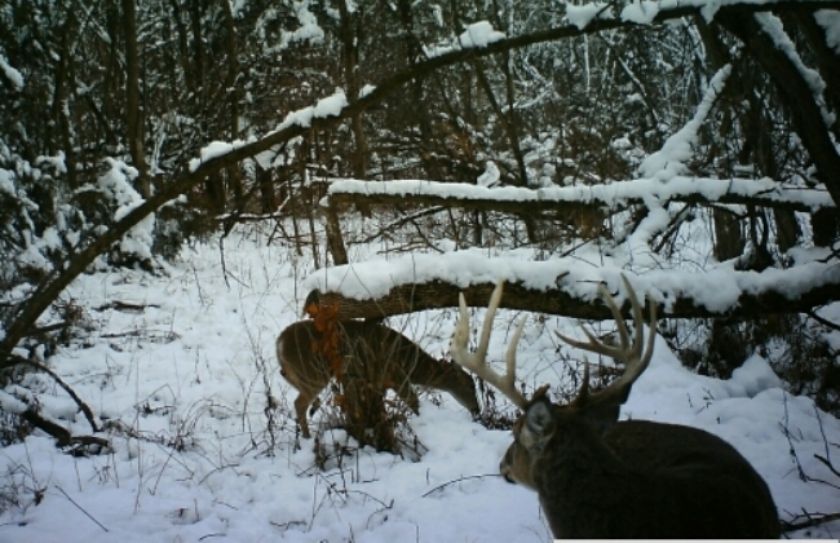
I wrote this article in 2008, but it is still true to this day. To learn more, please take a look at a couple of my most recent bedding area tactic articles as well:
*Scouting Deer Bedding Areas
*Building Buck Beds
First off, there are so many ways to make deer beds, and in my experience they don’t necessarily relate to specifically buck, or doe beds. Instead, the habitat and location, proximity to food, and various stress levels, will indicate where buck or does bed..and to another extent, young, or old bucks. But, we will save that for another topic..here are some thoughts more related to location.
***You have to find the best location, and then install the best tactics to fit the land within that location, to develop a bedding area.
1. Factors to Consider
A great bedding area should consider and compliment several key factors! Determine the location with your access in mind. The prevailing wind directions, exterior influences of adjacent food sources, bedding areas, habitat funnels, hunting pressure etc..
2. Consider current or future habitat
A. Open ag land
Establish conifer and/or shrub pockets that are 10-20′ in diameter, and planted close. 5-6′ spacing of spruce, speckled alder, or some local variety of “deer-proof” plantings. Quick growing pines can be the interior ring, then spruce, then an exterior of shrub plantings to further enhance the edge effect and create a natural transition into the interior bedding pocket. Natural is always best! Then, after the bedding pockets are located within the ag land you are improving, surround by native grasses and maintain as a bedding area possibly with adjacent food sources and natural funnels to encourage deer movements within gun or bow range as it relates to the rest of the parcel.
B. Select cut/post-timber harvest
LEAVE tops and debris! Pocket cut tops and debris to encourage bedding holes within heavy horizontal cover with 3-4 access/escape routes. Plant conifer bedding pockets within cuttings that take advantage of openings, humps, bumps, ridges, etc. The conifer pockets will define and grow into long-term exception bedding pockets regardless of future timber operations.
C. Dense conifer stands of timber…young
Cut interior pockets “chest-level” and lower to define bedding pockets with connecting trails, and use the exterior screening cover of the stand to protect the interior bedding pockets. Old conifer stands can be used by dropping a small % of undesirables/low quality trees to define bedding pockets by using horizontal cover. The exterior of older conifer stands should be screened by young spruce or other screening cover, including dropping exterior pines/spruce to further screen and define the exterior of the bedding area that includes the bedding pockets within.
3. Allow for seperation of quality.
DEFINE your bedding areas with pockets, and leave the rest alone outside of improving stands of timber by removing undesirables. Define that seperation of quality and you will define your access, deer movements, and stand locations. Use your undefined areas of mature or low quality habitat as access and downwind blockers for stand locations.
*Would you like to hinge cut a deer bedding area? Then check out these tactics for doing it right!
Random timber management is one of the worst ways to ruin a good deer parcel. You have to have definition of bedding and food source!
4. Screening Cover
An area of bedding pockets is not truly a bedding area until it is defined by exterior screening protection. Topography, bushes, conifers, slashing, logs, debris, burms etc.. Without screening cover, it's not a bedding area.
For example, take a 10 acre woodlot and install 100 bedding pockets within. Until the exterior of the 10 acre woodlot is secure with screening cover, the 100 bedding pockets are not fully effective because the exterior pockets…could be 20-30, are exposed to human traffic outside of the 10 acre parcle. When that outside % is not secure, there will be a continued flight movement of pressured deer towards the interior. When the flight pattern is allowed to continue the interior % of bedding pockets are less effective, making the entire 10 acre woodlot only a fraction of the % of effectiveness it could be-regardless of the quality of interior bedding pockets! It is far better to have 10 defined bedding pockets within 10 acres of screened/protected bedding cover than 100 bedding pockets within that same unsecured/unscreened/non-protected 10 acre parcel. In those two scenerios the unprotected 10 acre parcel can never offer true privacy and security even with an extreme number of bedding pockets because the spoiled exterior pockets contribute to chaos to the rest of the pockets as well as the entire 10 acre parcel.
And even on a wooded parcel the size of only 10 acres…allow for that separation of quality. The exterior should be screened but thin enough to discourage bedding…while the bulk of the bedding should take place to the non-approach sides, or centrally located. Seperate the beds, making room to hold more deer under less stressful arrangements…and so you know exactly, where they will be.
Conclusion
Solid bedding area tactics are the same today, as they were in 2008.
Location, Location, Location
It all starts by picking the right location first…then defining, building, enhancing, and maintaining the bedding pockets and bedding areas, for the foreseeable future. There shouldn’t be any rotation or changes in location of your bedding area tactics. Instead, your activities should all be completed in a cohesive unit of predictable deer movements for the entire parcel, relative to exterior influences.
Think about this…your success will not hinge on the ultimate quality of a bedding area, but instead on how adequate bedding area tactics are maintained and used by you as a hunter, and how well those bedding areas fit within a cohesive unit of movement on the entire parcel. Of course if you can exceed adequate…great! But exceeding adequate alone will not get you to your property’s potential whether it’s a bedding area, a food source, or a biological philosophy of harvest and herd dynamics.


